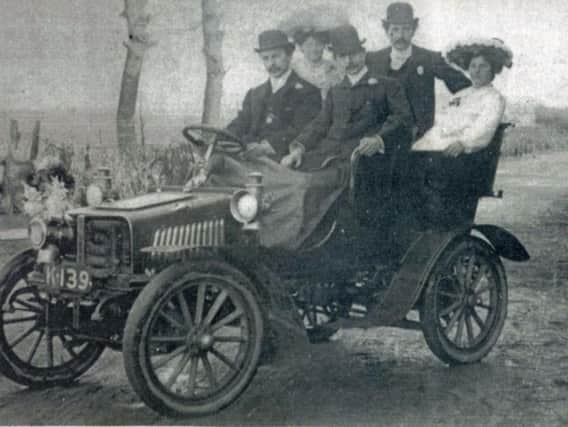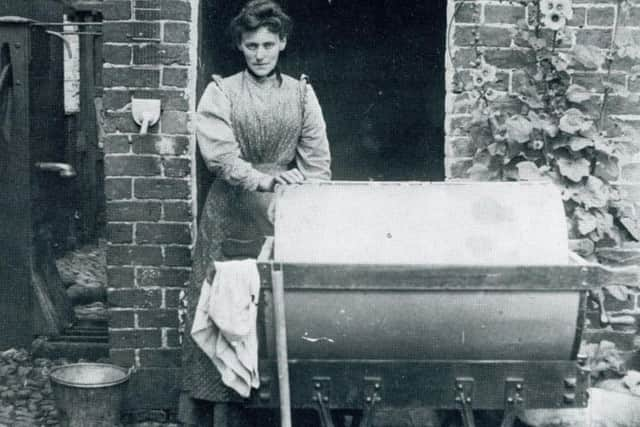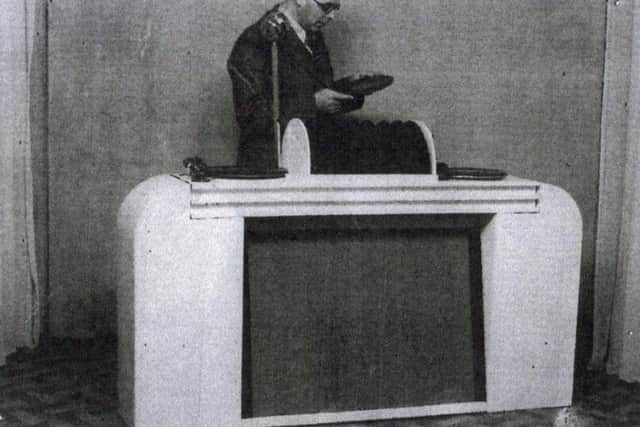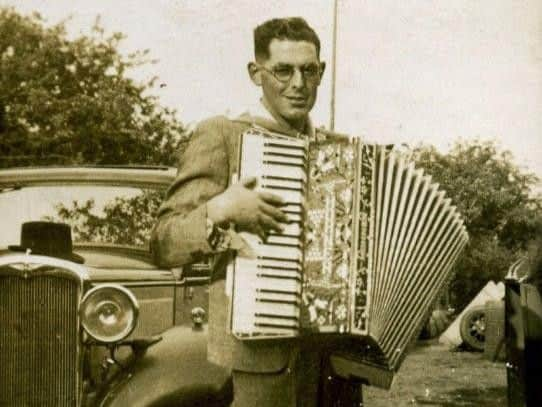Lancashire's family of madcap inventors


Friends from Pilling are always ready, at the drop of a flat cap, to praise the inhabitants of the village of old for their inventiveness and resourcefulness.
Pilling is remote geographically and was made more remote up to the end of the 19th century by the mossland which surrounded it. ‘Pilling moss, like God’s grace, is boundless,’ was an old saying: stretching from Pilling to the Wyre, the moss, or “the Union,” was such a thick and black morass it was known as “The Black Lake” by the monks of Cockersand Abbey.
Advertisement
Hide AdAdvertisement
Hide AdThe Gornall family epitomise the independent thinking such a country produced. At the end of the 19th century Richard Gornall worked from a little barn attached to Pilling windmill. He made penny farthing bicycles and helped to organise bicycle races in the village, accompanied by dazzling firework displays. Mr Gornall made the fireworks, though he couldn’t keep them a secret as his slightly singed appearance in the days leading up to the event gave away what he was doing.


His great invention was a safety bike driven by a chain rather than the pedals attached to the front wheel. It was tested by being suspended from the rafters of the barn with the inventor in the saddle pedalling as furiously as he could. The honour of the test drive on the road was given to Jimmy, the dryster of the Mill: the route went down the hill towards the mill kiln but unfortunately the bike had a fixed gear and Jimmy’s legs couldn’t keep up, he lost control and crashed into a field. However, the experiment, and the bike, was judged a success.
Richard’s brother Joseph (inset) achieved a little more fame. By the late 18th century the Lancashire cheese recipe began to look and taste something like Lancashire tasty and creamy of today, but on the small farms of the Fylde there was insufficient milk from a single day to make a cheese, and so each day’s milk was curdled and accumulated for several days until there was enough curd to make a cheese. It is this blending of several days’ curds which gives Lancashire cheese its unique flavour and texture. The general method involved breaking the curd, draining the whey, placing it in a vat and pressing it with a cheese stone. This curd was then mixed with a quantity of curd from previous days. The mixed-curd cheese was pressed, turned, clothed and salted over two days to make a final cheese. These early cheeses were flat in shape, about three to four inches high and were sold after being matured for five to six months.
This method of mixing curds to make cheese brought with it problems of consistency, exacerbated by each farm having its own method adopted through rule of thumb and memory. Milk was cooled by guesswork, neither salt nor curd were weighed, but as proverbially granny couldn’t be taught how to suck eggs, so she wouldn’t be taught how to make cheese either, and farms were resistant to change.
Advertisement
Hide AdAdvertisement
Hide AdCometh the hour, cometh the Pilling-er. Joseph Gornall was born in June 1856, the youngest of 10 children, in Eagland Hill, Pilling. Cheese making became his speciality and, in 1891, he was appointed “Itinerant Cheese Instructor of Lancashire County Council,” with the job of going round the county instructing farmers in cheese making. Opposition to Joseph and his methods was deep, but he gradually wore down resistance. He would stay on farms for two or three days, demonstrating his methods and their superiority over the local styles, and eventually he persuaded farmers to record temperatures, measure ingredients and to work out the best way to produce cheese from their local milk, cattle and soils.


As he was from Pilling he was an inventive sort of chap: he invented a tube for testing the fat content of milk, which also used his brother’s expertise as it worked when fastened to the spokes of a wheel of an up-turned
bicycle. Most importantly he created the “Gornall’s Patent Improved Cheese-maker” which further helped to standardise production. It was an enclosed revolving tub which allowed the milk to be warmed or cooled with hot or cold water, and allowed the whey to drain out easily. His recipe and methods are in principle still adhered to today.
Less well-known is Richard’s son, Fred Gornall, also an inventor, though with a wider range of interests than those of the preceding generation. His passion was for transport: he invented a “Patent Electronic Vulcaniser” for repairing motor tyres. Unfortunately, in 1908, there were not enough tyres around to make it a success but he was undaunted and, by 1914, had also invented two types of carburettor.
Advertisement
Hide AdAdvertisement
Hide AdHe built and repaired both cars and bicycles from his garage in Pilling, including a car of his own invention based around the design of a horse-drawn cart. This car was responsible for Pilling’s first fatal automobile accident: driving blithely down Pilling’s lanes Fred ran into and killed a pig belonging to Mr Simpson, a local farmer, and so both achieved local immortality. According to family legend, he even attracted the attention of Henry Ford, who made him one of his firm’s first agents in the country, but when the company wanted him to move to Lancaster he passed the job on to Barton Townley; he didn’t want to leave Pilling.


The Gornall inventive talents moved on to a third generation and this time extended beyond transport: William John Gornall invented a clay pigeon trap in 1972, and who can forget the Glissar, a unique keyboard instrument? Most people, apparently. It was the creation of Fred’s son, Frederick Joseph, usually known as Joe. The family believe that only the prototype was made and it is kept safely locked away deep in the village, for the problem with a one-of-a-kind instrument is that when the inventor is no longer around, there is no-one to play it.
Joe was also one of the first DJs in the area, and 60 years or so ago toured the dance halls with his “Dance-o-Phone,” a machine of his own invention which played pre-loaded “78” records automatically and had a microphone and a metal bar on which Joe could tap out the rhythms of the more traditional dances.